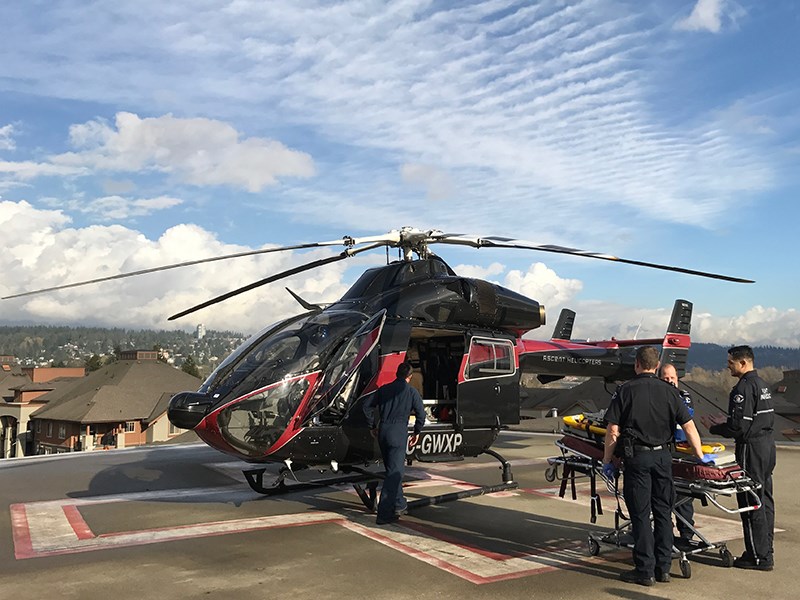Hearing an air ambulance helicopter flying overhead can become just background noise in the daily lives of people in Powell River.
“It’s important for them to understand that for individuals and families, it means their loved one is being cared for by health care workers,” said Kim Markel, Powell River General Hospital acute services manager.
It reflects that a patient is being sent for a higher level of care than that which is available locally.
“There were 196 [BC Emergency Health Services] air ambulance transports out of Powell River in 2020,” said Sarah Morris, BCEHS media relations communications officer. “The majority of these air transports [183] were patient transfers to higher level of care facilities.”
Annually, BCEHS responds to more than 7,000 patients requiring transportation by air ambulance services.
“I cannot stress enough how essential this is for a remote location such as Powell River,” said Markel. “We rely so heavily on BCEHS services.”
She added that there is a very diverse list of medical issues that precipitate calls for an air ambulance with stroke and cardiac emergencies being the top two.
Patients with significant stroke symptoms are flown to Vancouver General Hospital while cardiac patients typically are taken to St. Paul’s Hospital in Vancouver.
Other issues high on the list are obstetric and neonatal patients who are cared for at BC Women’s Hospital as well as pediatric patients who go to BC Children’s Hospital, which services youngsters up to the age of 16.
Traumatic injury patients from motor vehicle or ATV accidents and workplace injuries also can require air transport.
“Appropriate destinations are determined by a patient transport network handled by BCEHS,” said Markel.
Since mid-November, one helicopter and one plane, based in Nanaimo, have been responding to patients up and down Vancouver Island, the Gulf Islands and Sunshine Coast, including Powell River.
BCEHS traditionally had called in air ambulance responses from Vancouver, or to contractors on Vancouver Island to assist when a Powell River General Hospital patient required transport to another facility. That emergency air response now begins mid-island.
A dedicated helicopter and plane allow BCEHS to quickly transport patients in rural and remote communities to hospitals in Nanaimo, Victoria and Vancouver.
Additional air resources are coupled with an increase in staffing in the Nanaimo region, including the addition of five critical care paramedics, doubling the previous number.
These new resources immediately began filling a demand, logging two to three patient air responses a day.
BCEHS has partnered with Ascent Helicopters for the air ambulance helicopter - a specialized MD902 complete with night vision technology for poor light responses. Alkan Air has contracted one of its turbo-prop planes to BCEHS; it is operated out of the Nanaimo airport.
BCEHS air ambulances respond to critical hospital transfer patients as well as emergency 911 medical calls.
About 90 per cent of air ambulance responses are inter-facility transfers, from hospital to hospital.
The BCEHS air ambulance program is made up of a dedicated fleet of 16 air ambulances: six helicopters and 10 planes. Helicopters are based in Vancouver, Nanaimo, Kamloops, Prince George and Prince Rupert. Planes are based in Vancouver, Nanaimo, Kelowna, Prince George and Fort St. John.
“We dispatch the closest available resource able to respond,” said Morris.
In addition to its air resources, BCEHS can call upon more than 30 prequalified air carriers around the province to provide service as needed.
Helicopters are generally more efficient for short distances (fewer than 250 kilometres), responding to accident scenes, or to transport patients “rooftop to rooftop” between two hospitals.
Transports longer than 250 kilometres are better served by planes.



